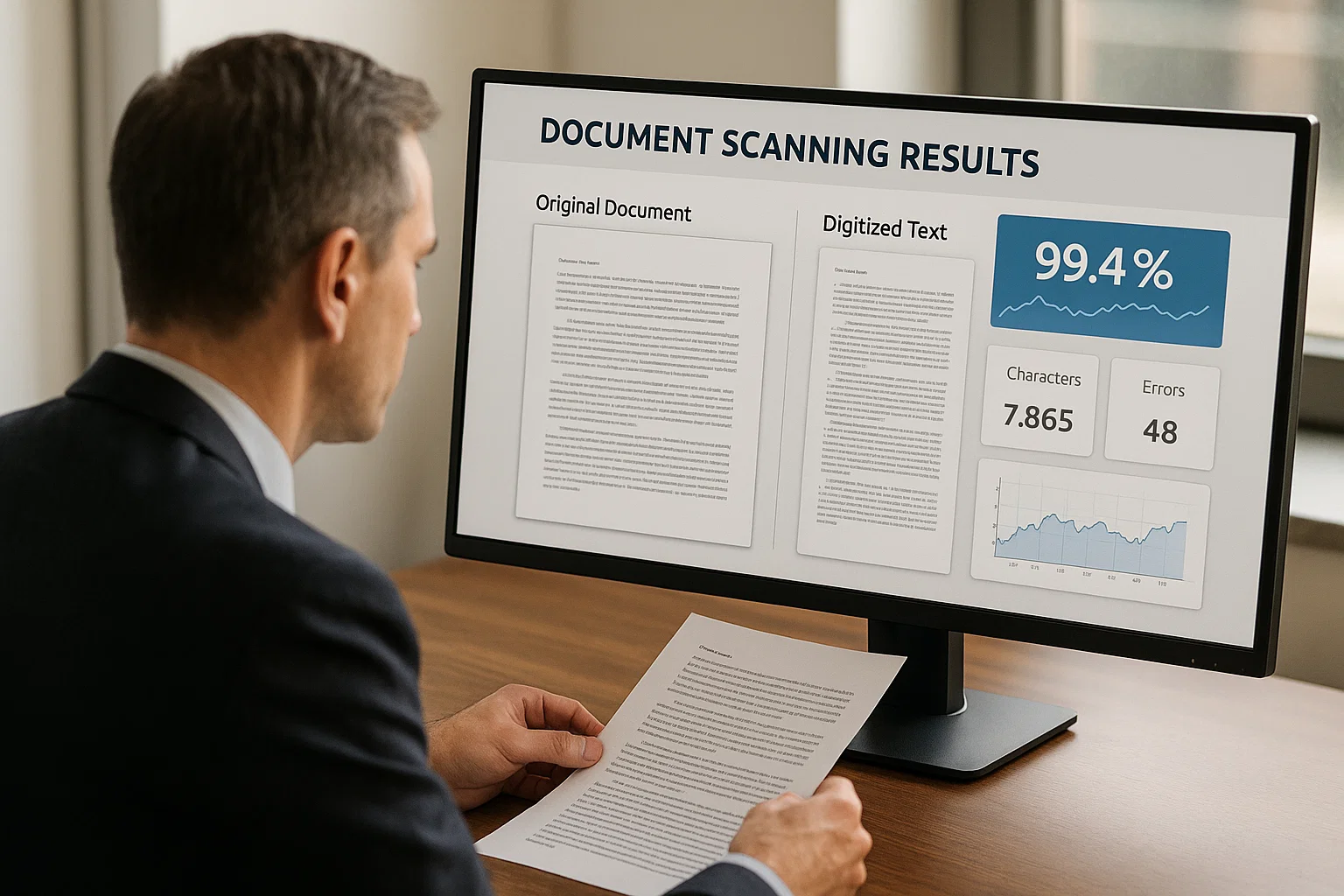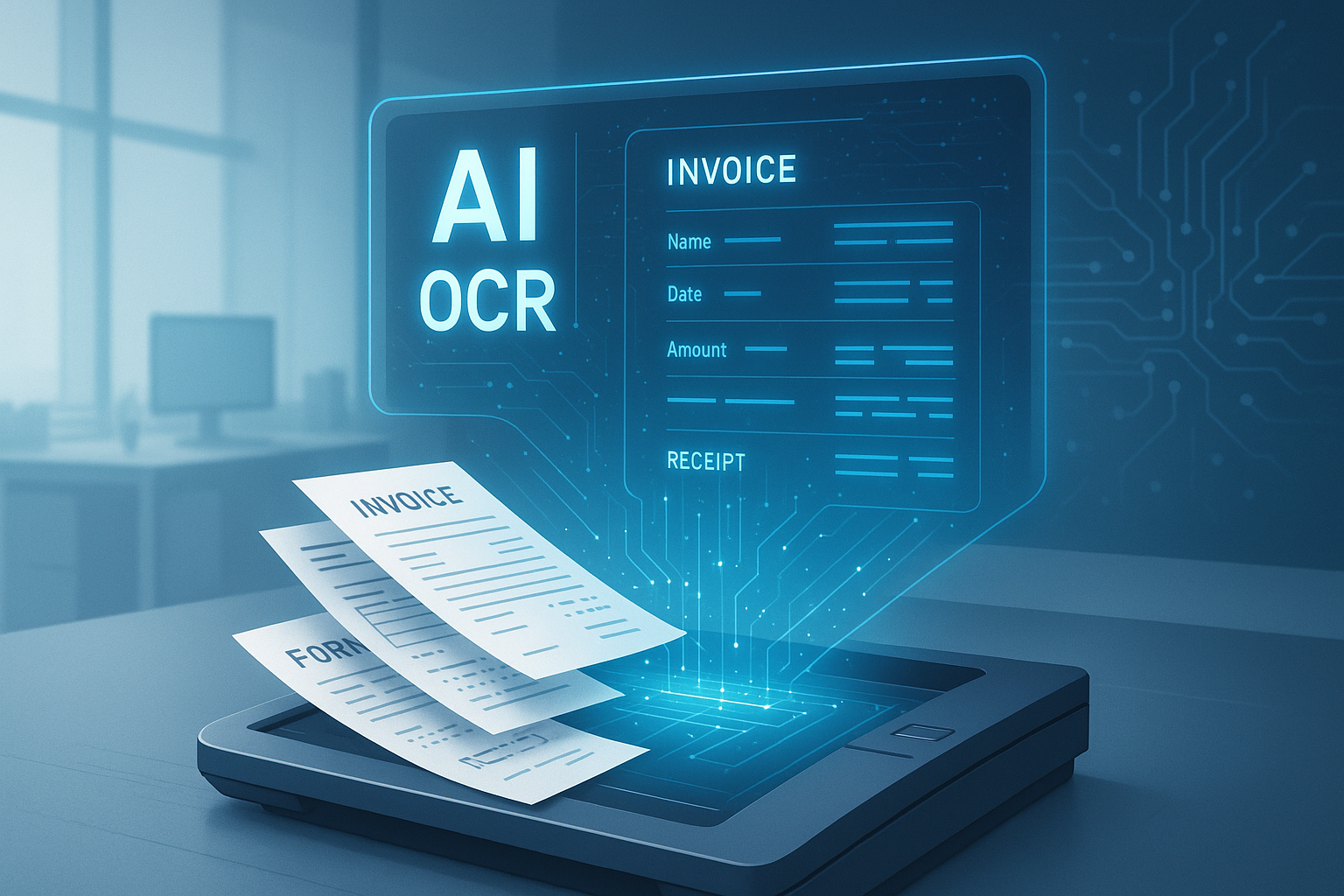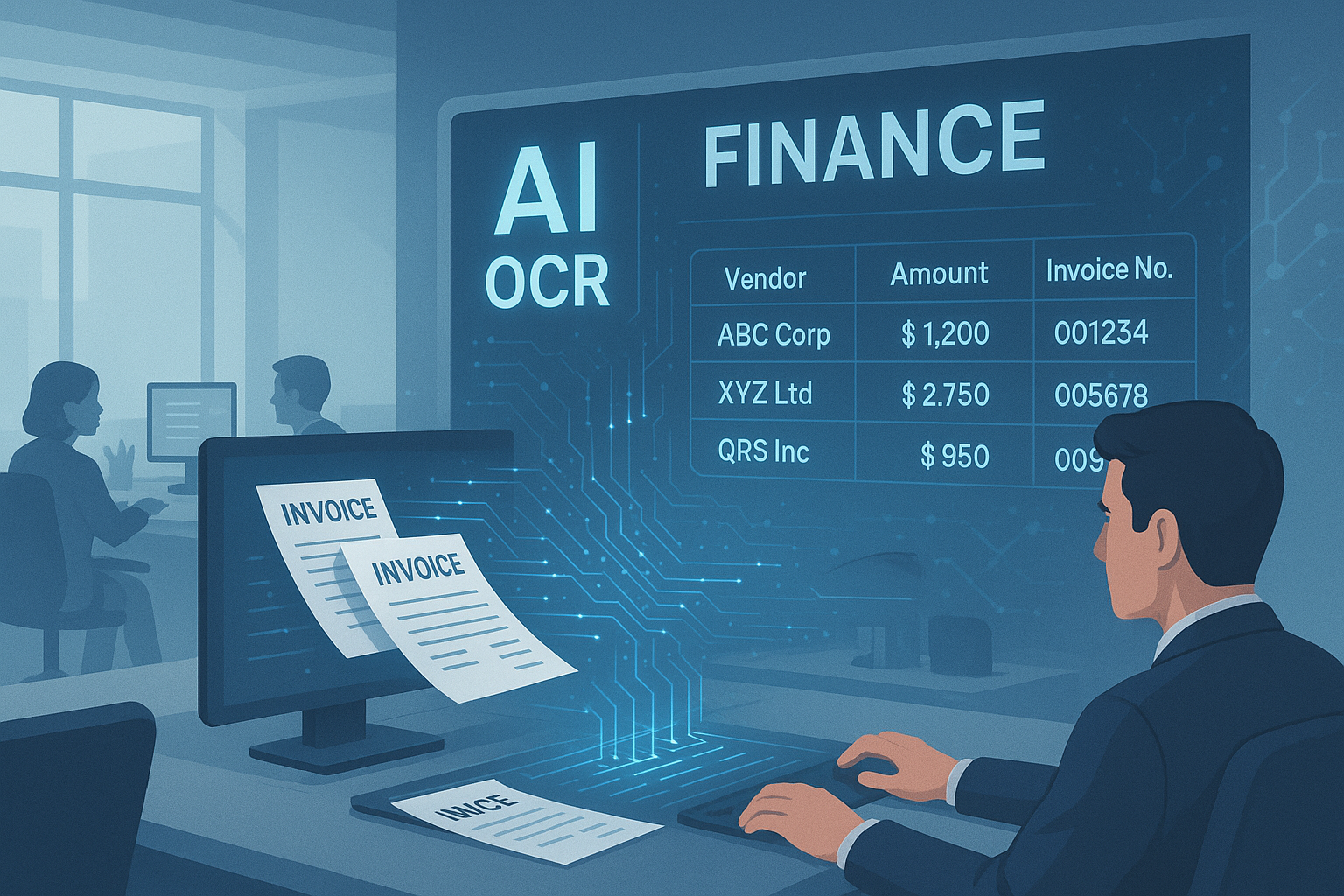Understanding OCR Accuracy: Metrics, Challenges, and Improvement Strategies
Discover what OCR accuracy means for your business, how it's measured, and proven strategies to achieve high accuracy OCR results for your document processing needs.

Table of contents
Understanding OCR Accuracy: Metrics, Challenges, and Improvement Strategies
In today's data-driven business landscape, converting physical documents into digital text isn't just convenient—it's essential. Optical Character Recognition (OCR) technology bridges this gap, but its effectiveness hinges on one critical factor: accuracy. For organizations processing thousands of documents daily, even a small improvement in OCR accuracy can translate to significant time and cost savings.
This guide explores what OCR accuracy truly means, how it's measured, factors that affect it, and practical strategies to achieve high accuracy OCR results for your business applications.
What Is OCR Accuracy?
OCR accuracy refers to how correctly an OCR system can recognize and convert text from images or scanned documents into machine-readable text. It's typically expressed as a percentage, representing the proportion of characters correctly identified compared to the total number of characters in the original document.
While vendors often advertise 99% accuracy rates, understanding what this actually means requires looking beneath the surface. A 99% accuracy rate might sound impressive, but in a document with 1,000 characters, this still means 10 characters could be incorrectly recognized—potentially changing dates, amounts, or other critical information.
How OCR Accuracy Is Measured
Several metrics are commonly used to quantify OCR accuracy:
Character Error Rate (CER)
CER measures the percentage of characters incorrectly recognized by the OCR system. It's calculated by dividing the total number of character errors (insertions, deletions, and substitutions) by the total number of characters in the reference text.
For example, if the original text contains 1,000 characters and the OCR system makes 20 character errors, the CER would be 2%, meaning the character accuracy is 98%.
Word Error Rate (WER)
WER focuses on whole words rather than individual characters. It's calculated by dividing the number of incorrectly recognized words by the total number of words in the reference text.
WER is often more relevant for practical applications since a single character error makes an entire word incorrect from a usability standpoint.
F1 Score
The F1 score combines precision (accuracy of positive identifications) and recall (ability to find all relevant instances) into a single metric. It's particularly useful for evaluating OCR systems on documents with varying text densities.
Factors Affecting OCR Accuracy
Understanding what influences OCR accuracy can help you identify improvement opportunities:
Document Quality
The physical condition of documents significantly impacts OCR accuracy. Factors include:
- Resolution of the scan (DPI)
- Contrast between text and background
- Presence of stains, folds, or tears
- Blurriness or noise in the image
Text Characteristics
The nature of the text itself affects recognition accuracy:
- Font type and size (unusual fonts are harder to recognize)
- Text formatting (italics, bold, underlined)
- Language and special characters
- Text orientation and skew
OCR Engine Capabilities
Different OCR engines have varying strengths and weaknesses:
- Training data used to develop the engine
- Algorithm sophistication
- Language support
- Ability to handle specific document types
Strategies for Improving OCR Accuracy
Achieving high accuracy OCR results requires a multi-faceted approach:
Optimize Document Scanning
Start with the best possible input:
- Scan at 300 DPI or higher for optimal text recognition
- Use proper lighting to enhance contrast
- Clean scanner glass and document surfaces
- Align documents properly to minimize skew
Pre-processing Techniques
Enhance document images before OCR processing:
- Deskewing to straighten text lines
- Binarization to convert grayscale images to black and white
- Noise removal to eliminate speckles and artifacts
- Contrast enhancement to make text more distinct
Engine Selection and Configuration
Choose and optimize your OCR solution:
- Select an OCR engine appropriate for your document types
- Configure language settings to match document content
- Adjust recognition parameters for your specific use case
- Consider using multiple engines for cross-validation
Post-processing Techniques
Refine OCR results after initial recognition:
- Dictionary-based correction for common words
- Context-aware spell checking
- Pattern matching for structured data (dates, phone numbers)
- Human verification for critical information
Advanced Approaches to High Accuracy OCR
Recent technological advancements have pushed OCR accuracy to new heights:
Machine Learning and AI
Modern OCR systems leverage deep learning to improve recognition:
- Neural networks trained on millions of document examples
- Continuous learning from corrections
- Context-aware recognition that considers surrounding text
- Adaptive processing based on document type
Domain-Specific Training
Customizing OCR for specific industries or document types:
- Training with industry-specific terminology
- Recognition optimized for specific form layouts
- Specialized handling of domain-specific notations
Hybrid Approaches
Combining multiple techniques for optimal results:
- Template-based recognition for structured forms
- Free-form OCR for variable content
- Human-in-the-loop verification for critical data points
Measuring ROI from Improved OCR Accuracy
Investing in high accuracy OCR delivers tangible business benefits:
- Reduced manual verification and correction time
- Faster document processing throughput
- Lower error rates in downstream business processes
- Improved compliance and audit readiness
- Enhanced data availability for analytics
Conclusion
OCR accuracy isn't just a technical specification—it's a business imperative that directly impacts operational efficiency and data quality. By understanding the factors that influence OCR accuracy and implementing targeted improvement strategies, organizations can significantly enhance their document processing capabilities.
Whether you're implementing OCR for the first time or looking to optimize an existing solution, focusing on accuracy will yield dividends in reduced manual effort, faster processing times, and more reliable data extraction.
Related Blog Posts

Revolutionizing Document Management with OCR Technology
Explore how AI-powered OCR technology transforms document management by digitizing text, streamlining workflows, reducing errors, and boosting efficiency across industries.

Smarter Invoice Processing: The OCR Advantage for Finance Departments
Learn how OCR technology revolutionizes invoice processing for finance departments by automating data extraction from invoices, reducing costs, and boosting accuracy. This guide covers OCR's benefits, AI enhancements, and practical steps to transform accounts payable operations

OCR APIs: The Secret Weapon Smart Finance Teams Are Using Right Now
Discover how OCR APIs transform finance teams by automating data entry from receipts and invoices, cutting processing time by up to 85%, and boosting accuracy to 98%. This guide shares real-world insights for modernizing financial workflows.
Ready to Transform Your Lending Process?
See how DocsAPI's AI-powered industry classification can help you process loans faster, improve accuracy, and scale your operations.
